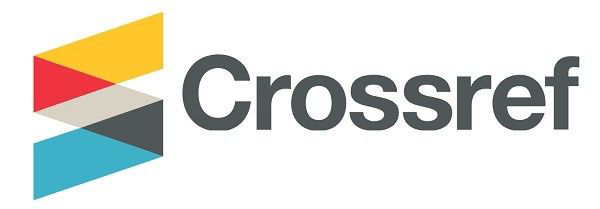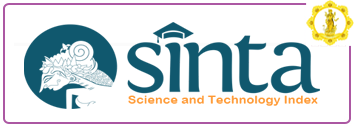Peningkatan Kualitas dan Mutu Pendidikan Agama Hindu Melalui Pemahaman Taksonomi Tri Kaya Parisudha
DOI:
https://doi.org/10.25078/jpm.v2i2.70Keywords:
Education, Tri Kaya ParisudhaAbstract
With the development aspects of psychology including psychological study, through many discussion groups, came the thoughts more carefully. In psychology study clearly a critical component that needs high attention also besides the cognitive aspects, in particular cognitive processes. Important aspects or components of it are the components of knowledge or knowledge learned. Each knowledge or science has important characteristics to consider in studying it. There may be the same traits in two different sciences, even though not all the same characteristics. In Hindu religious subjects, for example, many objects are abstract and immediate assessment using deductive reasoning. At this time has successfully developed a rich taxonomy of value-based tri kaya parisudha by Parmajaya, taxonomy was named Taxonomy Tri Kaya Parisudha. Taxonomy is expected to be used as a measurement of psychological for teachers to gauge the level of bhakti sradha (belief and trust) Hindu students
Downloads
References
Akker, J. van den 1999. Principles and Methods of Development Research. J. van den Akker..
Ammon, Ursula. 2005, Delphi-Befragung. Quantitative Organisationsforschung. Qualitative-Research.net, Online-Portal für qualitative Sozialforschung, Freie Universität Berlin.
Anderson, Lorin W. Krathwohl, D. R. 2001. Taxonomy for Learning Teaching and Assessing, New York Sanfransisco Boston: Logman
Borg and Gall, 1983. Educational Research, An Introduction. New York and London: Longman Inc.
Borg, W.R. and Gall, M.D. 2003. Educational Research: An Introduction 4th Edition. London: Longman
Chapman, M.1. 1986. The Structure of Exchanger; Piageta Sociological Theory, Human Developmaent, 29,181--194.
Dantes, Nyoman. 2014. Landasan Pendidikan Tinjauan dari Dimensi Makropaedagogis, Singaraja: Undiksha.
Dick, Walter, Carey Lou dan James O. Carey. 2005. The SystemicThesign Of Intruction, Boston: Pearson.
Fraenkel, J.R. 1981. Helping Students Think and Value: Strategies for Teaching the Social Studies. Second Edition. New Jersey: Prentice-Hall, Inc.
Gall, Meredith D., Joyce P. Gall, dan Walter R. Borg. 1989. EducationalResearch An Introduction (4th ed.). New York : Pearson Education, Inc.
Gay, L.R. 1991, Educational Evaluation and Measurement: Com-petencies for Analysis and Application. Second edition. New York: Macmillan Publishing Compan.
Gendler, Margaret E. 1992. Learning & Instruction; Theory Into Practice. New York: McMillan Publishing.
Hers, Richard H. et al. 1980. Model of Moral Education: An Appraisal. New York: Longman Inc.
Hooper, ML. 1994. The Efects of Hight and Low Level Cognitive and Literacy Language Arts Tasks on Motivation and Learning in Multiability Multicultural Classroom. Devplopment Studies:Learning and Intruction, 4(3), 233-251).
Hoover, Dempsey, K.V. Battiato, C. Walker. 2001. Parental Involverment In Home Work. Educational Psycology. 36, 196.209.
Hurlock, Elizaberth, 1980. Development Psychology a Kite-Span Approach. Alih bahasa oleh Istiwidayanti:Psikologi Perkembangan:Suatu Pendekatan Sepanjang Rentang Kehidupan (edV), Jakarta: Raja Grafindo Persada.
Lickona, Thomas. 199.1 Educating for Character. How Our School can Teach Respect and Responsibility. New York: Bantam Books.
Lickona, Thomas. 2004 Character Matters. How To Help Our Children Develop Good Judgment, Integrity, and Other Essencial Virtues. New York: Bantam Books.
Lorin W. Anderson and David R. Krathwohl, 2001, Taxonomy Learning, Teaching, and Assessing, Longman, New York
Plomp, Tj. 1994. Educational Design: Introduction. From Tjeerd Plomp (eds). Educational &Training System Design: Introduction. Design of Education and Training (in Dutch).Utrecht (the Netherlands): Lemma. Netherland. Faculty of Educational Science andTechnology, University of Twente
Pohl, M. (2000). Learning to Think, Thinking to Learn: Models and Strategies to Develop a Classroom Culture of Thinking. Cheltenham, Vic.: Hawker Brownlow.
Richey, Rita C. J. D. K., Wayne A. Nelson. 2009, Developmental Research : Studies of Instructional Design and Development.
Santrock, John,W. 2007. Psikologi Pendidikan, Dallas: University of Texas.
Sunarto,H. Agung Hartono,2006.Perkembangan Peserta Didik, Jakarta: Rineka Cipta.
Suparno, Paul. 1997. .Filsafat Konstruktivisme dalam Pendidikan, Terjemahan, Yogyakarta: Kanisius
Suparno, Paul. 2001. Teori Perkembangan Kognitif Piaget.J. Terjemahan, Yogyakarta: Kanisius.
Suprayoga dan Tabroni. 2001. Metodologi Penelitian Sosial Agama. Bandung: PT. Remaja Rosdakarya.
Tashakkori, A. & Teddlie, C. 2010. Mixed Methodologi Mengombinasikan Pendekatan Kualitatif dan Kuantitatif, Yogyakarta: Pustaka Pelajar.
Tim Penyusun, 2013. Kurikulum 2013, Jakarta:Kementerian Pendidikan dan Kebudayaan.
Tirtarahardja, Umar dan La Sulo, 2005.Pengantar Pendidikan, Jakarta: Pt.Asdi mahasatya.
Titib, I Made, Sapariani Ni Ketut, 2006. Keutamaan Manusia dan Pendidikan Budhi Pekerti, Surabaya: Paramita.
Titib, I Made, 2011. Bahan Ajar Veda, Surabaya: Paramita
Trianto. 2007. Model Pembelajaran Terpadu dalam Teori dan Praktek. Surabaya: Pustaka Ilmu
Trianto. 2007. Model Pembelajaean Inovatif Berorientasi Konstrutivistik. Surabaya: Pustaka Ilmu
Undang-Undang RI No. 20 Tahun 2003. Sistem Pendidikan Nasional. Bandung: Fokusmedia.
UNESCO United Nations for Education, Scientific and Cultural Organization]. (1996). InternationalCommision on Education for the Twenty First Century. Bangkok, Thailand: UNESCO.
Vidhurdhammabhorn, Bhikku, 1993. Kitab Suci Dhammapada, Jakarta: Yayasan Dhammadipa Arama.
Wasim, Alef Theria. 2005. Kajian dan Penelitian Agama, Yogyakarta: Day-day Bunga.
Lontar Tri Kaya Parisudha/Resi Sesana, Denpasar: Unit Pelaksanaan Dokumentasi Kebudayaan Bali.
Tutur Kumara Tattwa; Lontar Koleksi Gedong Kirtya Singaraja









